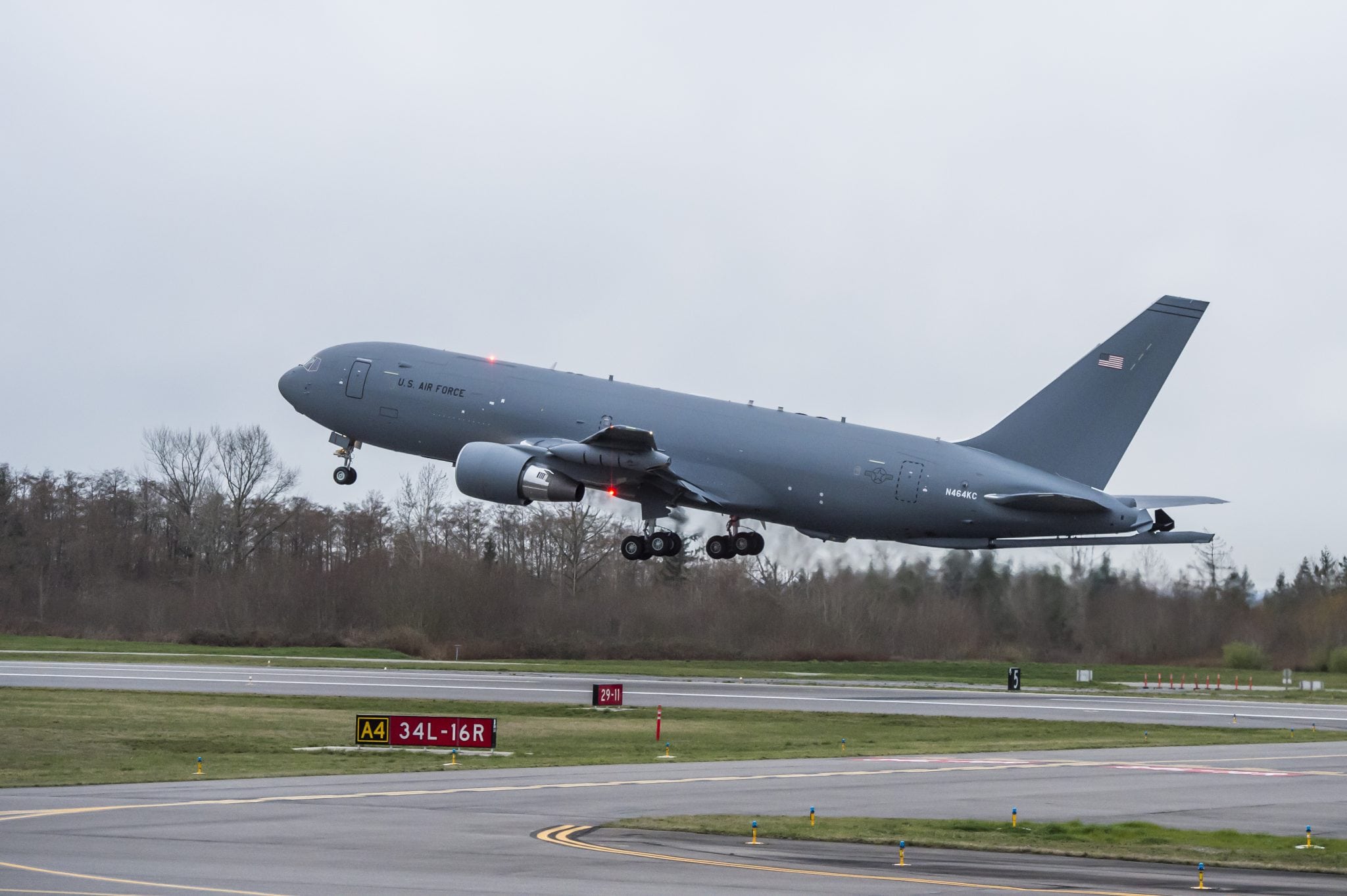
Boeing KC-46A. Photo courtesy of Boeing
The U.S. Defense Department (DOD) has launched a congressionally mandated study to determine how many refueling aircraft, transport planes and cargo ships it will need to support future military operations.
U.S. Transportation Command (TRANSCOM) said March 29 that the Mobility Capabilities and Requirements Study (MCRS-18), which began March 8, will conclude this fall. TRANSCOM is conducting the review with DOD’s Cost Assessment and Program Evaluation (CAPE) office.
U.S. Air Force Gen. Darren McDew, TRANSCOM’s commander, said the Air Force’s heavily taxed tanker fleet might struggle to meet future combatant commander requirements. The MCRS-18 will try to address that potential shortfall.
“America’s air refueling fleet is the most stressed of our air mobility forces,” McDew said. “The combination of an aging fleet, increasing demand and global tanker distribution puts a significant strain on this scarce national resource.”
While the Air Force plans to buy 179 new Boeing KC-46A Pegasus tankers, deliveries will not be completed for a decade or so, and those planes will replace only about a third of the existing tanker fleet. Boeing KC-135 Stratotankers, which make up most of the current fleet, are about 61 years old on average.
The fiscal year 2018 defense authorization act calls for the mobility study to be completed by Sept. 30. The last such review was completed five years ago, and lawmakers have expressed concerns that planned increases in U.S. Army, U.S. Navy and U.S. Marine Corps force structure could strain Air Force airlift and tanker forces and Navy sealift forces.
While the Air Force has more than 200 Boeing C-17 Globemaster III large transport planes, the aircraft’s production ceased more than two years ago. Deliveries of the Air Force’s even larger Lockheed Martin C-5M Super Galaxy ended almost 30 years ago.
In July, Lockheed Martin intends to deliver the last of the 52 C-5Ms to go through the Reliability Enhancement and Re-engining Program. In addition, the company is exploring what would be needed to extend the C-5M airframe to 2050 or 2060. The airframe is currently projected to last until 2040.
This article was originally published in Defense Daily, an Avionics sister publication. It has been edited.